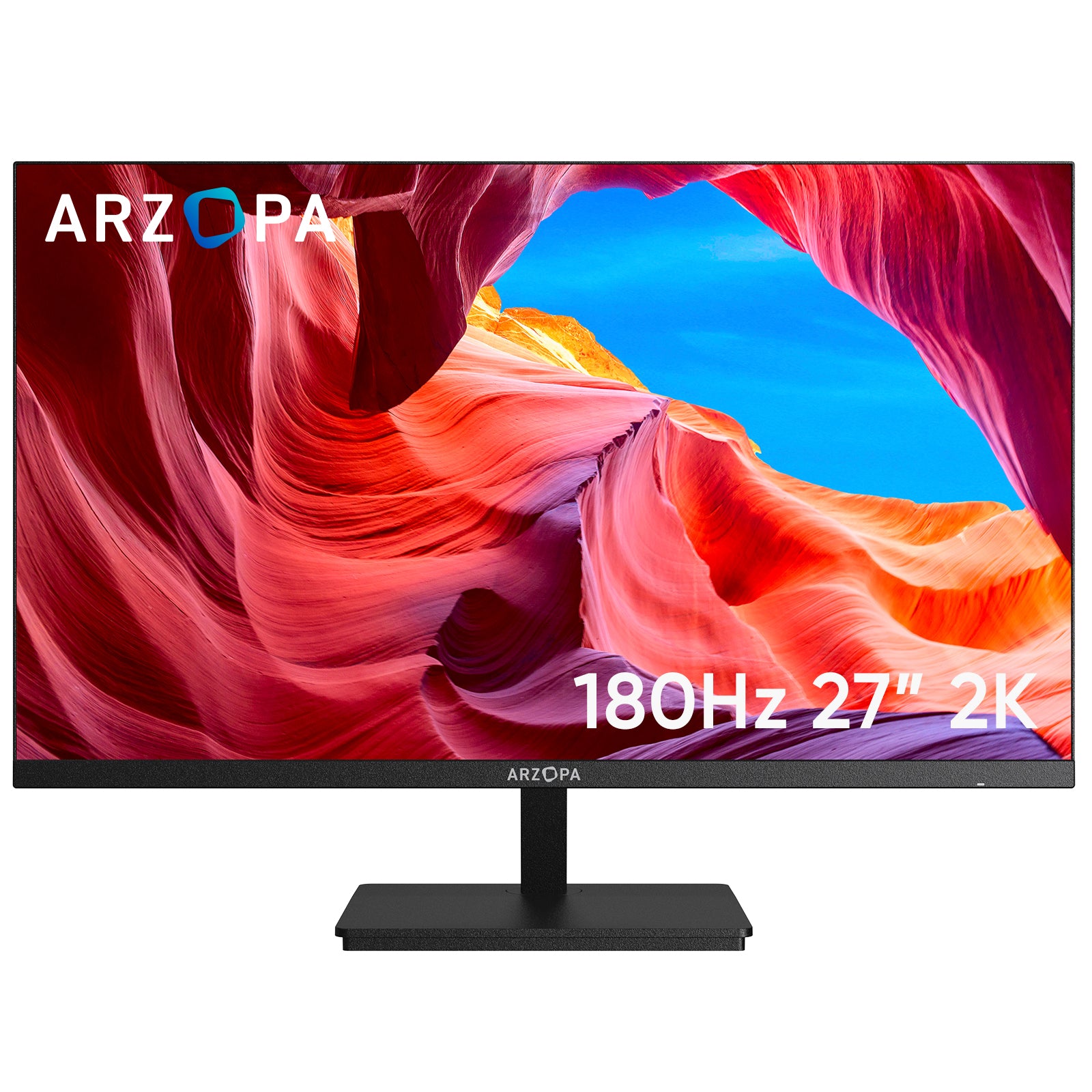The best panel types for achieving optimal image quality in 240Hz gaming are IPS (In-Plane Switching) and OLED (Organic Light Emitting Diode) panels. Both types offer distinct advantages that cater to high-performance gaming, particularly in competitive settings.
Overview of Panel Types: IPS VS. OLED
IPS Panels
Advantages:
- Color Accuracy: IPS panels are renowned for their superior color reproduction and consistency. They typically cover a broader color gamut compared to TN (Twisted Nematic) panels, making them ideal for gamers who appreciate vibrant visuals.
- Viewing Angles: They maintain color fidelity and brightness even at wide viewing angles, which is beneficial for multiplayer gaming where multiple players might be viewing the screen from different positions.
- Response Times: Modern IPS panels have significantly improved response times, often reaching as low as 1ms, which minimizes motion blur during fast-paced action.
Top Recommendations of IPS Monitors:
Alienware AW2723DF - This 27-inch monitor features a QHD resolution, 240Hz refresh rate, and excellent HDR support. It is praised for its sleek design and overclocking capability up to 280Hz, making it a top choice for serious gamers.
Image Credit: Alienware official webiste
ASUS ROG Swift PG27AQN - Known for its high refresh rate and color accuracy, this monitor is designed specifically for competitive gaming, providing a smooth experience with minimal input lag.

Image Credit: ASUS official website
If you just want to purchase a monitor with fast IPS and 180Hz, it recommended ARZOPA M1RC-27" 180Hz 2K QHD Gaming Monitor. With its rapid refresh rate, every movement on the screen is smooth and fluid, ensuring that you never miss a crucial moment in the heat of the game. The 2K QHD resolution brings out stunning details and vivid colors, making the gaming world come alive before your eyes.

ARZOPA M1RC-27" 180Hz 2K QHD Gaming Monitor
- 27" 180Hz 2K QHD FAST-IPS (2560*1440P) display.
- 180HZ Refresh Rate, 1 MS response time, experience smooth and fluid gameplay with zero motion blur.
- Ultra-narrow bezels & zero-frame Design, offer a nearly seamless viewing experience.
- Adaptive Sync, synchronizes the refresh rate with your graphics card to eliminate screen tearing and ensure smooth
- Versatile Connectivity, With 1 x Display Port 1.4, 1 x HDMI 2.0 Port, 1 x Audio Out Port.
OLED Panels
Advantages:
- Contrast Ratios: OLED panels deliver true blacks due to their ability to turn off individual pixels. This results in exceptional contrast ratios that enhance the overall image quality, especially in dark scenes.
- Fast Response Times: OLED technology allows for incredibly fast response times (often below 1ms), which is crucial for reducing motion blur in fast-paced games.
- Vibrant Colors: With their ability to produce a wider range of colors, OLED monitors provide stunning visuals that can enhance the immersive experience of gaming.
Top Recommendations of OLED Monitors:
Samsung Odyssey OLED G8/G80SD S32DG80 - This monitor stands out with its 4K resolution and near-instantaneous response time, making it one of the best options for high-end gaming setups.

Image Credit: Samsung official website
ASUS ROG Strix OLED XG27AQDMG - A great alternative for those looking for a 1440p option with excellent HDR performance and deep blacks.

Image Credit: ASUS official website
Factors Influencing Image Quality
Refresh Rate and Response Time
The primary advantage of a 240Hz monitor is the reduction in latency between the graphics card rendering an image and it appearing on-screen. Lower response times (ideally 1ms or less) contribute to smoother gameplay, particularly in fast-paced genres like first-person shooters (FPS) where every millisecond counts.

Resolution
While a higher refresh rate is essential, the resolution also plays a critical role in image quality. For competitive gaming, many gamers prefer 1440p (QHD) resolutions as they strike a balance between performance and visual fidelity. However, if your hardware can support it, 4K monitors can provide stunning detail at high frame rates.

Adaptive Sync Technologies
Support for technologies like G-SYNC or FreeSync can further enhance the gaming experience by reducing screen tearing and stuttering. These technologies synchronize the monitor's refresh rate with the frame rate output by the graphics card, providing smoother visuals during gameplay.

Conclusion
For gamers seeking the best image quality at 240Hz, IPS and OLED panels are the top contenders. IPS panels offer excellent color accuracy and viewing angles suitable for competitive play, while OLED panels provide unmatched contrast and vibrant colors that enhance immersion. When selecting a monitor, consider factors such as resolution, response time, and adaptive sync technology to ensure an optimal gaming experience tailored to your needs. We hope this comprehensive guide has given you some insights into what panel types provide the best image quality for 240Hz. If you have any further questions or would like to share your experiences with these innovative devices, please leave a comment below. Don't forget to share this article with your friends and colleagues who may benefit from the information. Happy browsing!










![What Should I Gift My Mother on Mother's Day? [Arzopa's Fear Picks]](http://www.arzopa.com/cdn/shop/articles/D10-fear-picks_0cb06232-cb50-43ce-9440-e353c12ee5c4.webp?v=1744184148&width=1)

